Can you see thermal energy? Yes, with just a few common kitchen items!
Although we can explain that molecules move faster when hot and slower when cold, in this science experiment kids will be able to see thermal energy in action and explore the concept hands-on.
We’ve included a materials list, printable instructions, and a simple explanation of how the experiment works. Enjoy our demonstration video to get started!
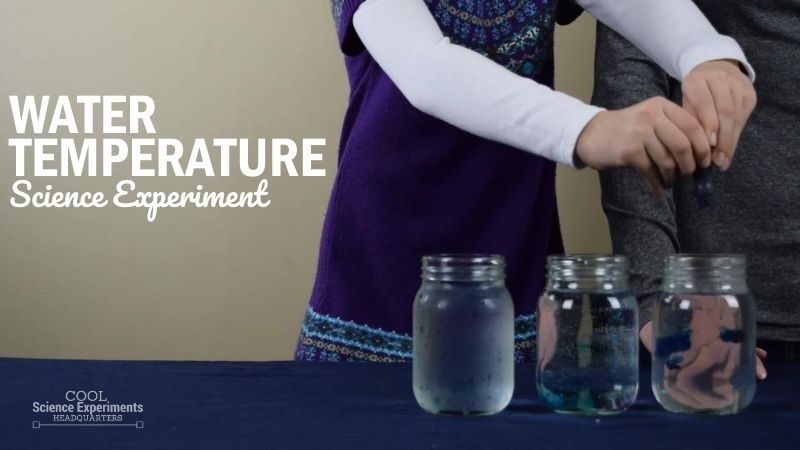
JUMP TO SECTION: Instructions | Video Tutorial | How it Works
Supplies Needed
- 3 Glass Jars
- Cold Water
- Room Temperature Water
- Hot Water
- Food Coloring
Water Temperature Science Lab Kit – Only $5
Use our easy Water Temperature Science Lab Kit to grab your students’ attention without the stress of planning!
It’s everything you need to make science easy for teachers and fun for students — using inexpensive materials you probably already have in your storage closet!
Water Temperature Science Experiment Instructions
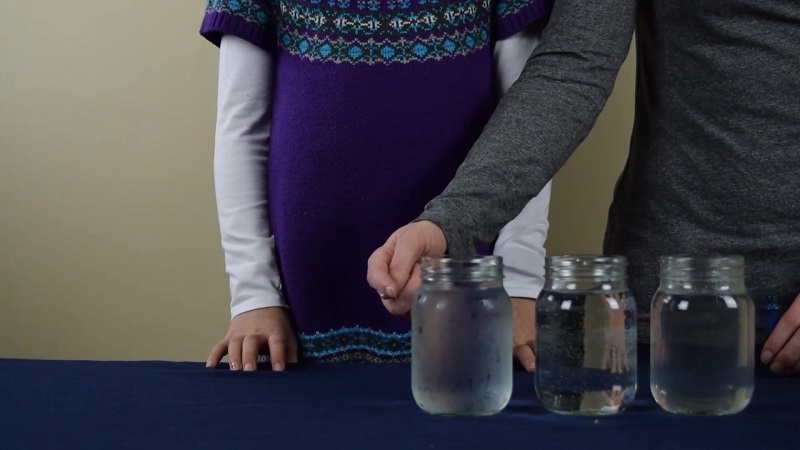
Step 1 – Begin by preparing three identical jars of water. Fill one jar with cold water, one jar with room temperature water, and one jar with hot water.
Helpful Tip: For cold water, fill the jar and put it in the fridge for an hour or two. For the room temperature water, fill the jar and leave it on the counter for an hour or two. For the hot water, boil the water on the stove or put it in the microwave for a minute or two.
Before moving to the next step, take a moment to observe the jars. The temperature of water should be the only difference. Do you think the water temperature will impact what happens when the food coloring is added to each jar? Write down your hypothesis (prediction) and then continue the experiment to see if you were correct.
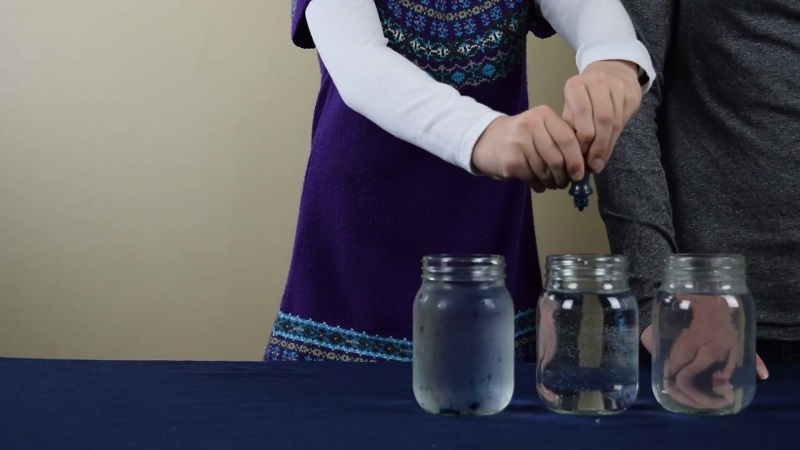
Step 2 – Place 2-3 drops of food coloring in each jar and observe what happens.
You’ll notice right away that the food coloring behaves differently in each jar. Was your hypothesis correct? Do you know why the food coloring slowly mixed with the cold water and quickly mixed with the hot water? Read the how does this experiment work section before to find out the answer.
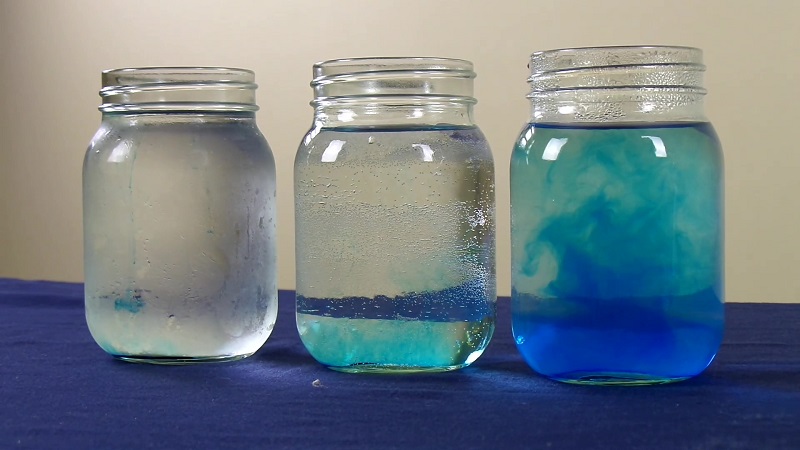
Video Tutorial
Water Temperature Science Experiment Step by Step Instructions
How Does The Experiment Work?
When observing the food coloring in the water, you will immediately notice that it behaves differently based on the temperature of the water.
Even though the glasses of water look the same, the difference in the water temperature causes the molecules that make up the water to behave differently. Molecules that make up matter move faster when they are warmer because they have more thermal energy and slower when they are colder because they have less thermal energy. In this experiment, the molecules in the hot water are moving around much faster than the molecules in the cold water.
Thermal Energy is the total energy of the particles in an object.
When placed into water, food coloring will begin to mix with the water. The food coloring will mix the fastest in the hot water because the molecules are moving fast due to their increased thermal energy. These fast-moving molecules are pushing the molecules of food coloring around as they move, causing the food coloring to spread faster.
The food coloring in the room temperature water will take longer to mix with the water because the molecules are moving more slowly due to their decreased thermal energy.
Lastly, the food coloring in the cold water will take a long time to mix with the water because the molecules are moving even slower due to a further decrease in thermal energy.
Water Temperature Science Lab Kit – Only $5
Use our easy Water Temperature Science Lab Kit to grab your students’ attention without the stress of planning!
It’s everything you need to make science easy for teachers and fun for students — using inexpensive materials you probably already have in your storage closet!
More Science Fun
Eventually, the food coloring will mix throughout all of the jars. Expand on the experiment, by estimating how long it will take to mix with the water in each jar. Then set a timer and find out how close your estimate was.
In addition, you can also try these other fun experiments using water and food coloring:
- Walking Water Science Experiment – Can water walk upwards against gravity? No, not really, but what makes water seem like it defies gravity is what we’re going to explore in this easy science experiment.
- Color Changing Walking Water Science Experiment – Much like the regular walking water science experiment, but with an added “colorful” twist.
- Coloring Changing Water Science Experiment – Science or magic? Try this experiment at home with your kids and watch their eyes light up as you pour the liquid into the bowl and “create” a new color.
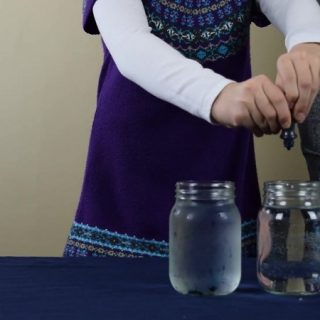
Water Temperature Experiment
Materials
- Three Glass Jars
- Cold Water
- Room Temperature Water
- Hot Water
- Food Coloring
Instructions
- Begin by preparing three jars of water. Fill one with cold water, one with room temperature water, and one with hot water. Helpful Tip: For cold water, fill the jar and put it in the fridge for an hour or two. For the room temperature water, fill the jar and leave it on the counter for an hour or two. For the hot water, boil the water on the stove or put it in the microwave for a minute or two.
- Place 2-3 drops of food coloring in each jar.
- Observe what happens to the food coloring. Does it behave differently in each jar?

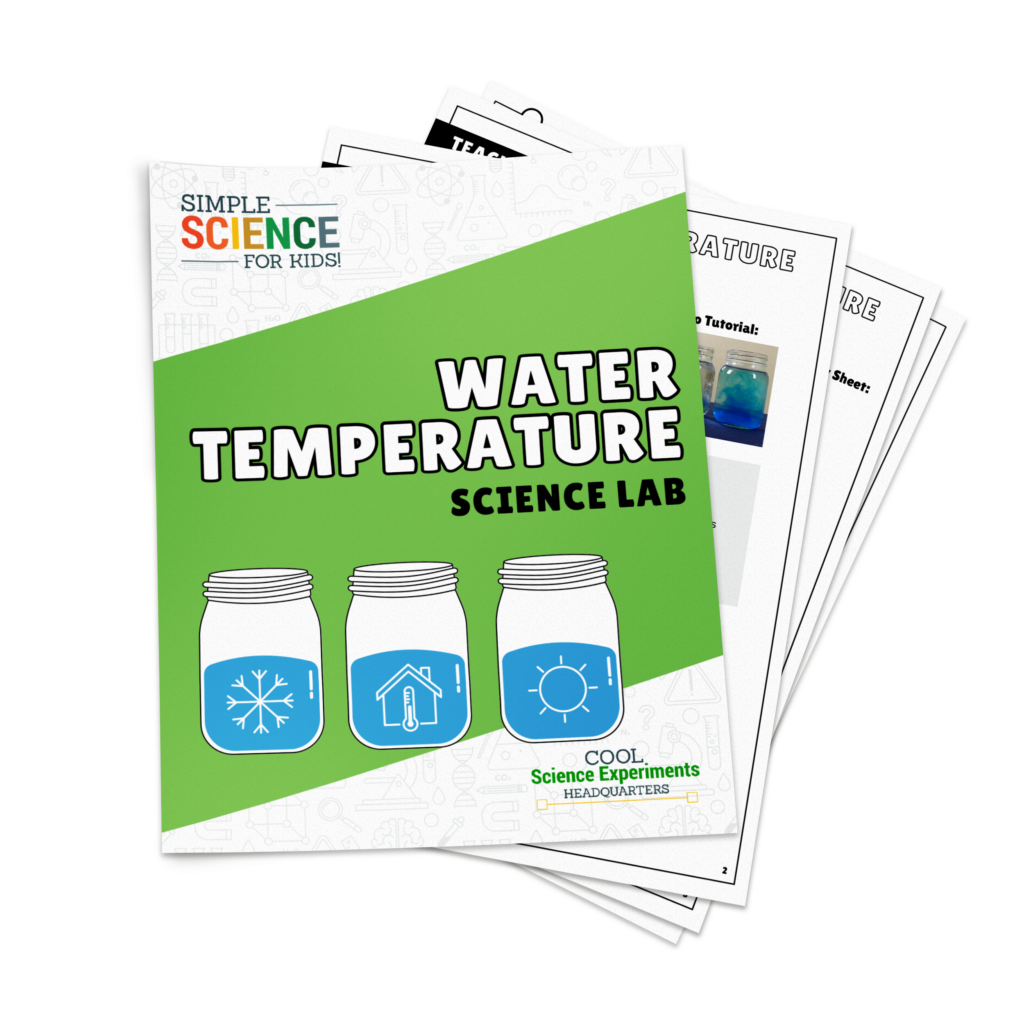

thank you for u showing my kids this they love it.
You’re amazing!!!!
I like it a lot it’s so cool that I did it for my class and got a A+
I will be using this at Parent Science Night tomorrow!